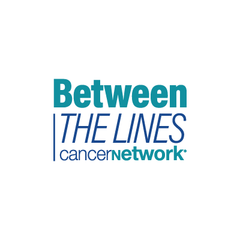
ELEVATE-RR: Efficacy Data
Experts discuss efficacy data from the ELEVATE-RR trial on the Bruton tyrosine kinase inhibitors acalabrutinib vs ibrutinib.
Episodes in this series

Michael R. Bishop, MD: Our primary end point was independent review committee PFS [progression-free survival]. Here are those results. When we looked at the number of events in follow-up, we see strikingly similar results. Progression-free survival was 38.4 months with acalabrutinib and 38.4 months with ibrutinib. The median follow-up was 41 months, with a hazard ratio of 1. Just for interest, the investigator assessment of progression-free survival was nearly identical to that of the independent review committee. Bruce, are you surprised by those results? Or is that pretty much what you would’ve expected?
Bruce B. Bank, MD: That was pretty much what I would have expected. Although, I didn’t know for sure that I had a right to expect it. The curves are almost parallel to each other. It’s almost like a little alpha helix where the 2 curves go with each other. I’d rephrase that. I didn’t necessarily have any reason to believe that acalabrutinib couldn’t be inferior or better than ibrutinib, because we see target specificity play a role in that in other situations. But I understand that for this trial, the real thrust was to try to minimize adverse effects and toxicities.
Michael R. Bishop, MD: I agree. It was cool to see identical curves. But I did expect to see similar outcomes. Remember that patients were randomized to what their mutational status was. When looking at 17p deletions, we look at acalabrutinib vs ibrutinib. For the 17p on acalabrutinib, progression-free survival was 32.9 months, and for ibrutinib, it was 27.6 months. This didn’t reach statistical significance, so these were essentially the same, and the hazard ratio again was 1.00. When we look for 11q deletion, some people would argue it isn’t necessarily a poor prognostic feature. As a matter of fact, it’s borne out when we look at the progression-free survival for those patients: 38.4 vs 41.6 months. They’re very similar, with a hazard ratio of 1.08. That’s pretty similar to the entire patient population as a whole. Bruce, any comments on these results?
Bruce B. Bank, MD: The only thing I’d say is that it’s interesting there’s so much focus on the patients with 17p deletions. This probably stems from some of the original data with ibrutinib, where it was shown that ibrutinib was superior to the cytotoxic drugs when it came to these patients. My own opinion and observation is that these drugs work perfectly well when patients don’t have a 17p deletion.
Michael R. Bishop, MD: I can remember years ago, particularly when we were in the purine analogue era that made a significant [difference]. The FCR [fludarabine, cyclophosphamide, rituximab] has not only shown potential, it has demonstrated overall survival compared with other forms of therapy, that still the patients with 17p deletions were the ones I’d get referred for allogeneic stem cell transplantation. With the introduction of Bruton kinase inhibitors, it’ll come to a point where people will ask, “Why is this a problem?” Although we know what it is in other hematologic malignancies. But I find these results to be very impressive and borne out, because we know that the incidence of 17p deletion rises over time and is associated with even more poor prognosis as you go down in therapy. I’m always impressed by these results.
The next is overall survival. As Bruce commented on, when you look in the [Journal of Clinical Oncology] and see the overall survival curves, they’re almost overlapping. Neither of the curves had met their median overall survival. These are very impressive. There was a hazard ratio of 0.82 with a slight favoring of acalabrutinib, however not reaching statistical significance. This was a secondary end point. This is encouraging that we’re seeing over 60% going out at 48 months. Remember, the median follow-up was over 40 months. If you look at the Kaplan-Meier curves in the article, it’s greater than 60%. If you want to round it up, it’s 70% overall survival at 48 months for these 2 patient populations.
Transcript edited for clarity.
Newsletter
Stay up to date on recent advances in the multidisciplinary approach to cancer.



















































































